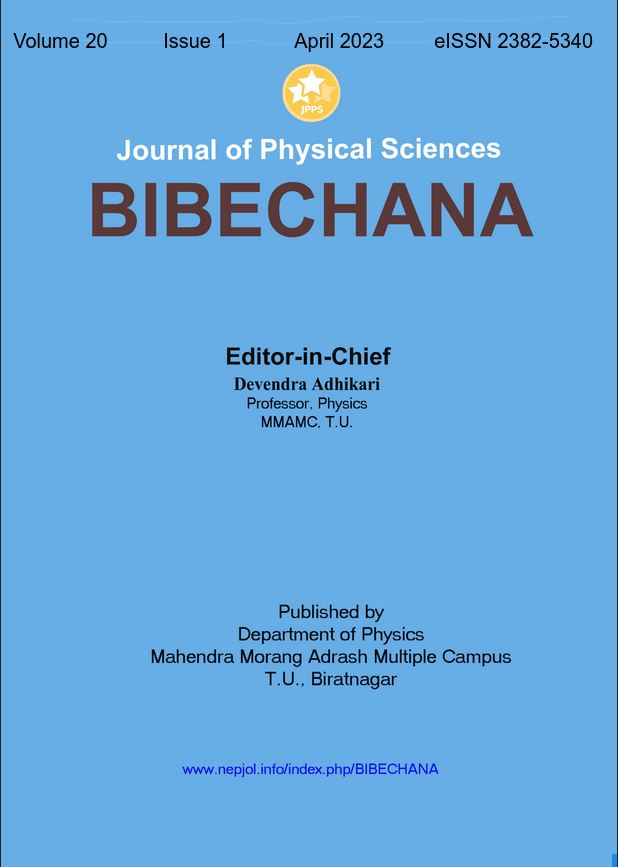Study of aerosol optical properties in Lumbini, Nepal
DOI:
https://doi.org/10.3126/bibechana.v20i1.48825Keywords:
Aerosol Optical Depth, Angstrom Exponent, LumbiniAbstract
The mixture of different sized particles (fine and coarse) with air composition forms aerosols. Increased economic activities, vehicles, and rapid urbanization made Lumbini one of the heavily polluted regions in Nepal. Data are extracted from AERONET websites between 2013 to 2019 with standard deviation. We are mainly focused on understanding variations in aerosol optical properties: aerosol optical depth (AOD), angstrom parameter (α and β), visibility, single-scattering albedo (SSA), refractive index (real and imaginary), and asymmetry parameter (AP) in the Lumbini region. The maximum value of AOD (675nm) in Lumbini occurred mostly during post-monsoon season (0.61 ± 0.38) whereas, the values of AOD were found to be lower during the monsoon season (0.18 ± 0.12). Most of the AOD values are found to be greater than 0.4, indicating the higher level of pollution in the study area. There is a positive correlation between perceptible water and AOD, maximum correlation (0.4) occurs at the lowest AOD (440nm) while the minimum (0.1) at the highest AOD (1020nm). The turbidity coefficient (β) has an adverse effect on visibility. The Visibility over Lumbini was found to be highest (20 km) during monsoon. Single-scattering albedo (SSA) accretions occur at wavelengths between 440 and 675 nm, but the pattern changes from 675 to 1020 nm. All parameters were found to be distinct and seasonal fluctuations among this station are mainly due to the different aerosols availability such as biomass burning, mixed aerosols, and anthropogenic aerosols over the Lumbini site.
Downloads
Downloads
Published
How to Cite
Issue
Section
License
Copyright (c) 2023 Santosh Sapkota, Sabin Gautam, Santosh Pokhrel, Aayush Gautam, Kailash Basnet, Roshan Kumar Mishra, Jeevan Regmi

This work is licensed under a Creative Commons Attribution-NonCommercial 4.0 International License.
This license enables reusers to distribute, remix, adapt, and build upon the material in any medium or format for noncommercial purposes only, and only so long as attribution is given to the creator.




